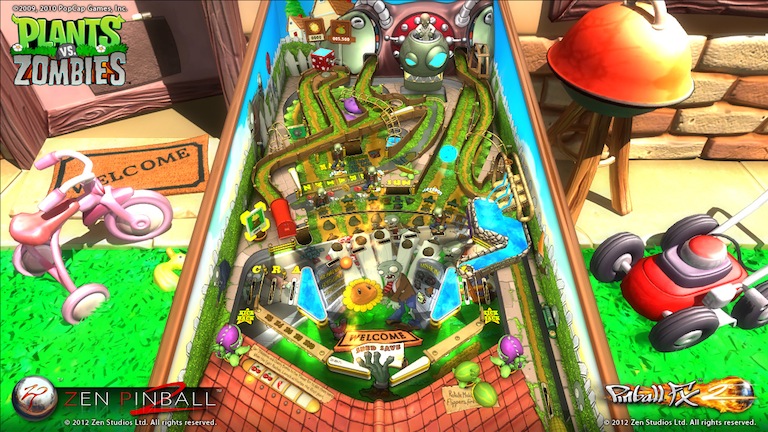Since I got my iPad mini I am only playing on it, to the detriment of my normal iPad, to say nothing of the iMac. I have been since constantly complaining (quite justifiably) on the non-visibility of the Farsight ball. In fact I had the same complaints when I was playing on my normal iPad.
Recently, I started playing again on the iMac, a 27" one, and I discovered that, although I still hated the "almost invisible" Farsight ball I could play (in fullscreen) much better and, in most cases, enjoy tables which were frustrating on the iPad. (This does not apply to all tables of course: White Water is still unplayable).
So, I decided to analyse the situation using my professional tools: intuition and back-of-the-envelope calculations (while in my professional life I often have to do more sophisticated calculations, I enjoy greatly the back-of-the-envelope ones). First, I had to find out at what distance were my eyes with respect to the screens in the various configurations. A rough measurement showed them to be respectively:
40 cm for the iPhone 5
50 cm for the iPad mini
55 cm for the iPad
60 cm for the iMac
(I decided not to bother about the MacBook Air: enough is enough).
The variation of the distances is not big (after all the length of our arms is a serious constraint) but still there exists a 50 % distance increase between the iPhone and the iMac.
Next came the measurement of the respective portions of the screen (the whole screen for the iDevices and the part of the screen containing the same part of the table for the iMac):
5 cm x 9 cm for the iPhone 5
12 cm x 16 cm for the iPad mini
15 cm x 20 cm for the iPad
32 cm x 33 cm for the iMac
It is instructive at this point to give the value of the solid angle under which we are seeing the screen. We obtain it, in an approximate way, by dividing the surface of the object by the square of the distance. We find:
0.03 for the iPhone5
0.08 for the iPad mini
0.1 for the iPad
0.3 for the iMac
Two interesting conclusions can be drawn at this level. First, there is no big difference between the iPad mini and the normal iPad. On the other hand going from the iPad to the iMac there is a leap in viewing angle, comparable to the one going from the iPhone to the iPad. In order to visualise the difference between the subjective appreciation of the various tables I give below a comparison of the playfield (for one of my favourites, Big Shot) for the iMac, the iPad mini and the iPhone where I have corrected the surface in order to take into account the distance at which the screen is situated. A picture is more telling than a solid angle measurement :-)
I have made a special effort to obtain screenshots with the ball clearly visible in the case of the iPad and the iPhone. In a normal play this is not always the case.
Just by looking at the picture one can draw the conclusion that playing on the iMac is much easier than on the iPad let alone the iPhone. This is not a conclusion limited to the Farsight pinballs. I do indeed find playing Tristan fullscreen on the iMac much easier than on the iPad. From the iPad to the iPhone things get really hairy: my top score on the iPhone is half that on the iPad. Even pinballs are not exceptional in this respect. I do like playing Bird Jumper a lot, both on the iPhone and on the iPad. Still my top score on the iPad is 50 % better than the one on the iPhone.
Does all this analysis mean that the iPad is not a good game machine? Not at all! The iPads (both normal and mini) are great (I wouldn't be as affirmative in the case of the iPhone). It is just that when a developer makes a bad choice, like the one Farsight is doing with the reflections on the ball (which, in the name of realism, make it at times almost invisible) the playbility of a game diminishes. While this is only marginally annoying in the case of a big screen, where one has time to see the ball and react, it becomes easily a factor of frustration on smaller screens. Let's hope Farsight does something about this one day.












